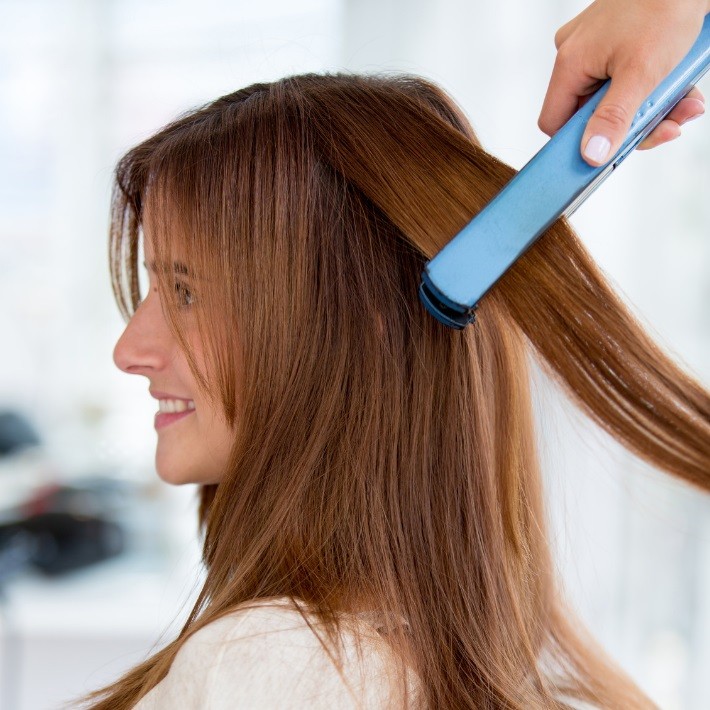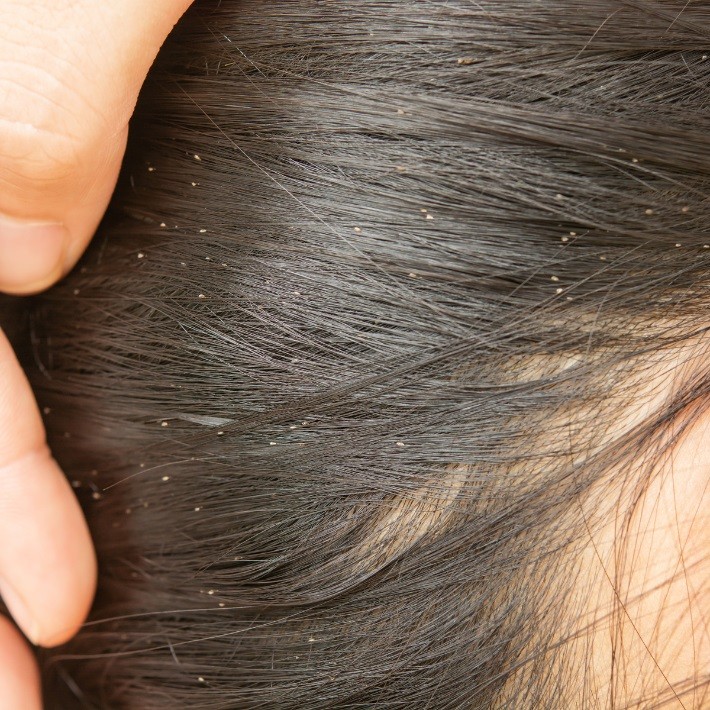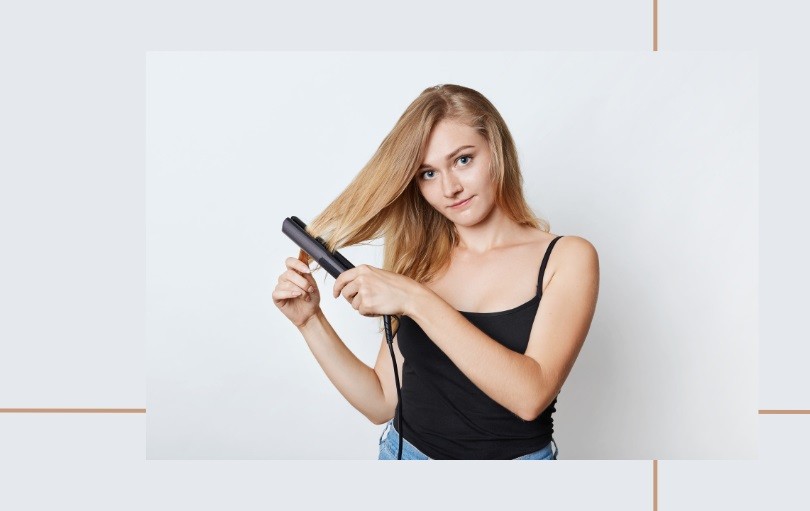Last Updated on March 28, 2025
Are you scratching your head in curiosity, wondering, “Does hair straightener kill lice?” We’ve all faced the frustrating battle against lice at some point in our lives. These pesky critters can be a real pain to eliminate. Before you fire up your trusty straightener, let’s dive into the facts and see if it’s a viable solution to your lice problem.
Does Hair Straightener Kill Lice?

The answer to the burning question, “Does hair straightener kill lice?” is a bit of a mixed bag. In theory, the heat from a hair straightener can kill adult lice and their eggs (nits). However, using a straightener as your primary method for lice removal isn’t the best idea. While it may work to some extent, it’s not the most effective or safest option for lice removal.
Related: Will Light Ash Blonde Cover Orange Brassy Hair?
The Lice Life Cycle
To fully understand why a hair straightener isn’t the best solution, let’s take a closer look at the life cycle of lice.
- Nits (eggs): Lice eggs, called nits, are laid by adult female lice close to the scalp. They take about a week to hatch.
- Nymphs: Once hatched, baby lice are called nymphs. They grow into adult lice within 9 to 12 days.
- Adult lice: Adult lice can live up to 30 days on a human head. They feed on blood and lay more eggs, continuing the cycle.
Straightening the Facts: The Pros and Cons of Using a Hair Straightener
Pros
- Heat kills: A hair straightener can kill adult lice and some nits when applied correctly at high temperatures.
- Instant results: If a louse is trapped between the plates of a straightener, it’ll be killed instantly.
Cons
- Missed nits: Straighteners can’t reach nits close to the scalp due to the risk of burning the skin.
- Ineffective on wet hair: Lice treatments often require wet hair, but using a straightener on wet hair can cause damage.
- Damage to hair: Frequent use of a hair straightener can cause long-term damage, such as split ends and breakage.
- Not foolproof: A single missed louse or nit can lead to a re-infestation.
Tried and True Lice Treatment Methods
Although a hair straightener isn’t your best bet, there are various other effective methods to tackle lice.
- Over-the-counter treatments: Products containing pyrethrin or permethrin can kill lice and nits. Follow the instructions carefully for the best results.
- Prescription treatments: In some cases, a doctor might
- Prescription treatments: In some cases, a doctor might prescribe a stronger treatment for stubborn infestations that don’t respond to over-the-counter options.
- Manual nitpicking: Meticulously combing through the hair with a fine-toothed comb can help remove lice and nits. This method requires patience and precision.
- Home remedies: While not always scientifically proven, some people swear by home remedies like tea tree oil, coconut oil, or vinegar to treat lice.
- Professional lice removal services: If all else fails, consider seeking help from a professional lice removal service.
Prevention is Better than Cure
Now that we’ve addressed the question, “Does hair straightener kill lice?” it’s crucial to focus on preventing future infestations. Here are some tips to keep lice at bay:
- Avoid head-to-head contact: Lice can’t fly or jump, so they spread through direct contact.
- Don’t share personal items: Avoid sharing combs, brushes, hats, headphones, or hair accessories.
- Regular hair checks: Inspect your hair and your family’s hair regularly for signs of lice or nits.
Related: How To Get Rid Of Brassy Hair Without Toner?
Lice-Proof Your Home: Tips for a Lice-Free Environment

Cleaning and Laundry Tips
- Wash bedding and clothing: Launder any items that have come into contact with the infested person, using hot water and high heat in the dryer.
- Vacuum regularly: Vacuuming your home, especially the areas where the infested person has been, can help remove lice and nits.
- Seal non-washable items: Place non-washable items like stuffed animals in a sealed plastic bag for two weeks to kill any remaining lice and nits.
Regular Hair Inspections
- Check for signs of infestation: Inspect your family members’ hair regularly, especially if there’s been a lice outbreak at school or among friends. Early detection can help prevent the spread of lice in your home.
- Teach children about prevention: Educate your kids about the importance of not sharing personal items like hats, combs, and headphones to minimize the risk of lice transmission.
Pet Care and Lice Prevention
- Know the difference: Human head lice cannot infest pets, but some pets can carry different species of lice. Consult your veterinarian if you suspect your pet has lice.
- Keep pets clean and groomed: Regular grooming and cleaning of pet bedding can help prevent the spread of pet-specific lice and contribute to a lice-free environment in your home.
Natural Alternatives: Are They Worth a Shot?
Essential Oils and Home Remedies
- Tea tree oil: Some people believe that tea tree oil can kill lice and nits, but research on its effectiveness is limited.
- Neem oil: Neem oil is thought to have insecticidal properties, making it a potential natural lice treatment. However, more research is needed to confirm its effectiveness.
- Vinegar rinse: A vinegar rinse can help loosen nits from the hair shaft, but it’s not proven to kill lice.
The Power of Coconut Oil
- Moisturizing and suffocating: Coconut oil is known for its moisturizing properties, but it may also help suffocate lice when applied generously to the hair and scalp. This method, however, is not guaranteed to kill nits.
- Combing aid: Using coconut oil as a lubricant while combing through the hair with a fine-toothed comb can make the nitpicking process more comfortable and efficient.
Herbal Lice Repellents: Do They Work?
- Herbal sprays and shampoos: Some products on the market claim to use herbal ingredients to repel lice. While these products may have a pleasant scent and make the user feel proactive, their effectiveness in repelling lice is not well-established.
- Ingredients to look for: Certain essential oils, like lavender, eucalyptus, and peppermint, have been suggested as potential lice repellents. However, more research is needed to confirm their efficacy in repelling lice.
Related: Can I Use Clove Water On My Hair Everyday?
Does Hair Straightener Kill Lice? FAQs
Q: Can a hair straightener kill lice completely?
A: No, a hair straightener isn’t a foolproof method for killing lice. It may kill some adult lice and nits, but it can’t reach those close to the scalp, and it can damage your hair if used too often.
Q: Can I use a hair straightener after using a lice treatment?
A: It’s best to wait until your hair is completely dry after using a lice treatment before using a hair straightener. Applying heat to wet hair can cause significant damage.
Q: What temperature does a hair straightener need to be to kill lice?
A: Hair straighteners should be set at high temperatures (around 350°F or 180°C) to effectively kill lice. However, this can also increase the risk of damaging your hair and scalp.
Q: How often should I use a hair straightener to kill lice?
A: Using a hair straightener to kill lice isn’t the most effective method, and using it frequently can damage your hair. Opt for more reliable lice treatments instead.
Q: Can I prevent lice by using a hair straightener regularly?
A: Regular use of a hair straightener won’t necessarily prevent lice, and it can damage your hair over time. Focus on prevention methods like avoiding head-to-head contact and not sharing personal items.
The Final Verdict
So, does a hair straightener kill lice? The answer is yes and no. While a hair straightener can kill some lice and nits, it’s not the most effective or safe method for lice removal. It’s essential to explore other tried-and-true lice treatment options and focus on prevention to keep these unwelcome guests away from your precious locks.

